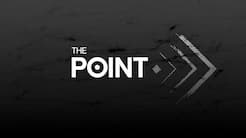Several artists from the APY Art Centre Collective wrote to the federal and South Australian governments last week asking them to crack down on "money hungry, self-interested private [art] dealers", reigniting calls for stronger protections for Indigenous artists.
The letter from the Collective, first in the Guardian yesterday and which NITV News has since obtained, alleged that at least three artists were taken from their remote communities by a private dealer and forced to pay off debts by producing new paintings.
Commonly referred to as 'carpetbagging', the practice sees generally non-Indigenous men targeting vulnerable Indigenous artists, and often includes the use of intimidation tactics to force the artists to paint for little or no remuneration.
Senior Curator of Aboriginal and Torres Strait Islander Collections and Exhibitions at the Museum of Contemporary Art Australia, Clothilde Bullen, said calls within the industry to crack down on carpetbagging dates back more than a decade.
"It's incredibly disappointing and it's really frustrating that legislation still isn't in place to really come down hard on this," she said.
"We as a curatorial lobby group way back in 2006, 2007 actually spoke and did a submission to the to address this issue of carpetbagging, and not just in the APY lands but all over Australia."
Calls to beef-up regulator
The 2007 Senate Inquiry into the Indigenous visual arts and craft sector saw the formation of an (IAC). Members of the IAC, such as dealers and art centres, have to adhere to a high standard of ethical trading, including not misleading artists and allowing a "cooling-off" period once contracts are signed.
Currently the IAC is voluntary to sign onto, something which was criticised in last year's fake art inquiry.
In their letter, the APY Collective argued the IAC had little impact, while others in the industry have said it needs to be better funded to fulfil a proper regulatory role.
Ms Bullen said artists become vulnerable to carpetbaggers when Indigenous art centres aren't supported.
"There's a lot of education that needs to happen. There's a lot of professional development for arts workers and art centre coordinators that needs to happen. There needs to be this multi-tiered approach," she told NITV News.
The APY Collective proposed three courses of action.
It called for the IAC to be housed with the Australian Competition and Consumer Commission, for better communications between state police departments when it comes to cracking down on carpetbaggers, and for promotional material differentiating the "" of art centres and private dealers to consumers.
The recent fake art inquiry also surveyed the issue of carpetbagging.
In its report, tabled just under a year ago, it recommended additional funding to enable art centres and other relevant organisations to "advise and support artists who have been affected by carpetbagging".
How to buy ethical art
Ms Bullen said the wider public needs to be educated on how to buy Indigenous art ethically, and why it's important.
"The first thing is, if you're going to be travelling to any of those areas across the country, regional, remote or even within cities: the peak body – – actually puts out a which tells you how to buy ethically," she said.
"The other thing is: don't buy from a petrol station or someone that's sort of on the street. Actually find out where those community art centres are. Go and attend the art centre, speak to the staff, speak to the art workers.
"And for the most part, remote community art centres have Aboriginal people from that community on their board who are governing those spaces. So you know that not only the money, but the actual professional development that comes with that is going back into community, and it's creating sustainability within that space."

ANKAAA ethical buying guide Source: ANKAAA



